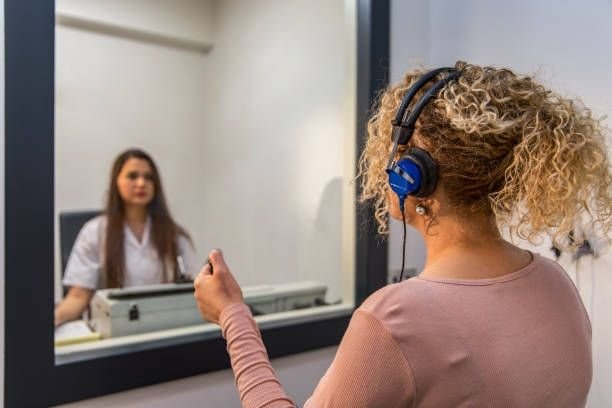
Overview
An audiometry test is a non-invasive diagnostic procedure used to assess a person's hearing ability. It measures how well an individual can hear sounds of varying pitch (frequency) and loudness (intensity). This test is commonly performed by an audiologist and plays a crucial role in detecting hearing loss, evaluating its type and severity, and guiding appropriate treatment or hearing aid selection. During the test, the patient wears headphones and listens to sounds or speech at different volumes and pitches. They respond by indicating when they can hear the sound, which helps the specialist create an audiogram—a visual chart showing the hearing thresholds in each ear. Audiometry can include several subtests such as pure-tone audiometry, speech audiometry, and tympanometry, depending on the purpose of evaluation. This test is essential for people experiencing symptoms like difficulty understanding speech, frequently increasing TV volume, or ringing in the ears (tinnitus). It is also routinely used in schools, workplaces, and during medical checkups to ensure healthy hearing.
How Its Works?
An audiometry test works by measuring a person’s ability to hear sounds at different pitches and volumes to determine the presence and extent of hearing loss. During the test, the individual wears a pair of headphones or ear inserts in a quiet room. A series of tones or spoken words are played through the headphones at varying frequencies (high and low pitches) and intensities (soft to loud). The person is asked to respond—usually by pressing a button or raising a hand—whenever they hear a sound. This process helps the audiologist determine the softest sounds the person can hear at each frequency, which are then recorded on an audiogram, a chart that visually represents hearing levels. In addition to pure-tone testing, speech audiometry may be performed to evaluate how well the person can hear and understand speech. Some tests, like tympanometry, may also be done to assess the middle ear’s function. Together, these tests provide a comprehensive picture of the person’s hearing health and help guide treatment if needed.
 An audiometry test offers several valuable benefits for individuals
of all ages. It helps in the early detection of hearing loss,
allowing timely intervention before the condition worsens. By
identifying the type and degree of hearing impairment, it
enables healthcare professionals to recommend the most suitable
treatment, such as hearing aids, medication, or surgical options.
The test is non-invasive, painless, and quick, making it
suitable even for children and elderly patients. It also helps
monitor existing hearing conditions over time and assess the
effectiveness of treatments or hearing devices. Additionally,
audiometry is often used in occupational health to ensure workers in
noisy environments maintain safe hearing levels, promoting long-term
auditory well-being.
An audiometry test offers several valuable benefits for individuals
of all ages. It helps in the early detection of hearing loss,
allowing timely intervention before the condition worsens. By
identifying the type and degree of hearing impairment, it
enables healthcare professionals to recommend the most suitable
treatment, such as hearing aids, medication, or surgical options.
The test is non-invasive, painless, and quick, making it
suitable even for children and elderly patients. It also helps
monitor existing hearing conditions over time and assess the
effectiveness of treatments or hearing devices. Additionally,
audiometry is often used in occupational health to ensure workers in
noisy environments maintain safe hearing levels, promoting long-term
auditory well-being.